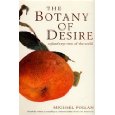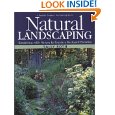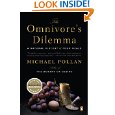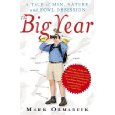
Image via Wikipedia
Increasingly, walking down the garden aisles of big name stores and plant nurseries, we are faced with shelf upon shelf of products that claim to tackle every pest, weed and soil problem possible. I am always amazed at the sophistication of the ingredients with names that I can not pronounce, much less claim to completely understand or know what they are or do. Just read the warnings to know these are not products to be taken lightly. We know we are surrounded by a complex ecosystem in which every creature plays a major role. Every species, starting with the smallest bacteria in the soil to higher mammals from deer to man, are closely connected. It is a delicate web of life so complex and intricate, that to disrupt one thread has repercussions somewhere up or down the entire system.
Take our garden soil as a start, only recently scientists have started to have a comprehensive understanding of the complexity of life in the root zone. They have now been able to identify as many a one million distinct bacteria species in a single gram of soil! This dirt under out feet is full of life, rich with chatter, unexpected alliances and surprising acts of aggression. It has been compared to another great marketplace: the internet. Soil is alive, filled with Micro-organisms. In addition to bacteria, we can go up the life ladder with millions of each organism represented: fungi, algae, protozoa, nematodes, mites, earthworms to name a few. All are always working and in the business of breaking down organic matter to release nutrients for the plants.
Above ground, the web continues. Every garden ecosystem is a collection of plants and animals – producers and consumers – a garden is a teeming community of insect herbivores eating plants but keeping these herbivores in check, are dozens of species of predator insects. These in turn, are prayed on by birds, amphibians and small mammals that hunt and make their life in the garden. Each is a vital link to the garden ecosystem.
You can then see, how introducing any toxic substances contained in pesticides, herbicides or fertilizers would upset this delicate balance. I can only hope that the reader, as I have become aware by my understanding, will in the future, think carefully before opening those bags and spreading them on the plants or soil.
The right additives for our gardens are often those which come by naturally and by natural processes. Compost rules! all you need is a top dressing of compost to feed the soil and mulch to preserve the soil from erosion and conserve humidity.
Organic Soil Amendments: Alfalfa Meal, corn gluten (inhibits seed germination), cottonseed meal, soybean meal, seaweed products, wood ash, blood meal, bone meal, feather meal, fish emulsion, compost.
Mulches: composted hardwood, straw, fresh mushroom manure, pine needles, cocoa bean hulls, compost.
“Humankind has not woven the web of life. We are but one thread within it. Whatever we do to the web, we do to ourselves. All things are bound together. All things connect.” ~Chief Seattle, 1855

































